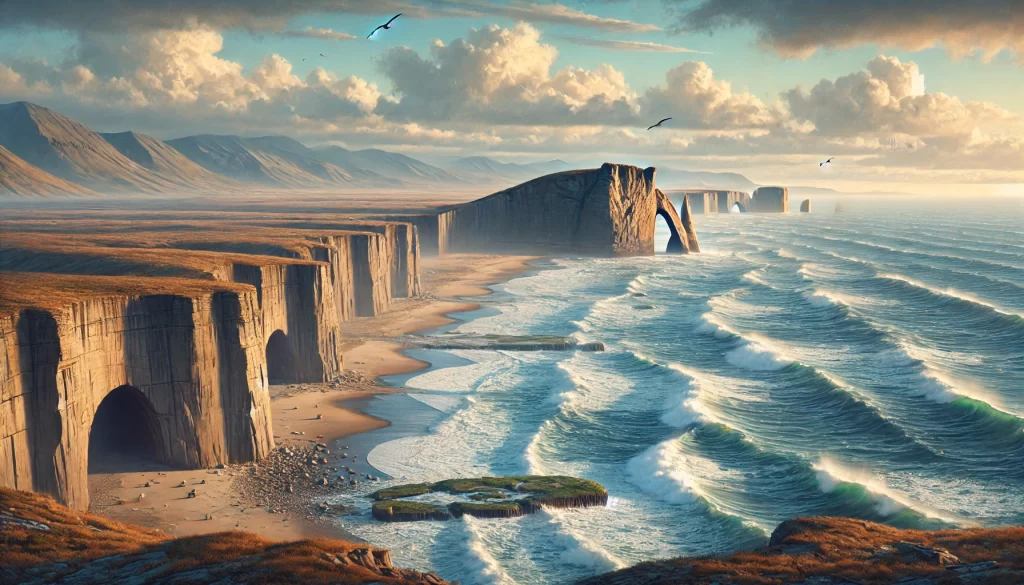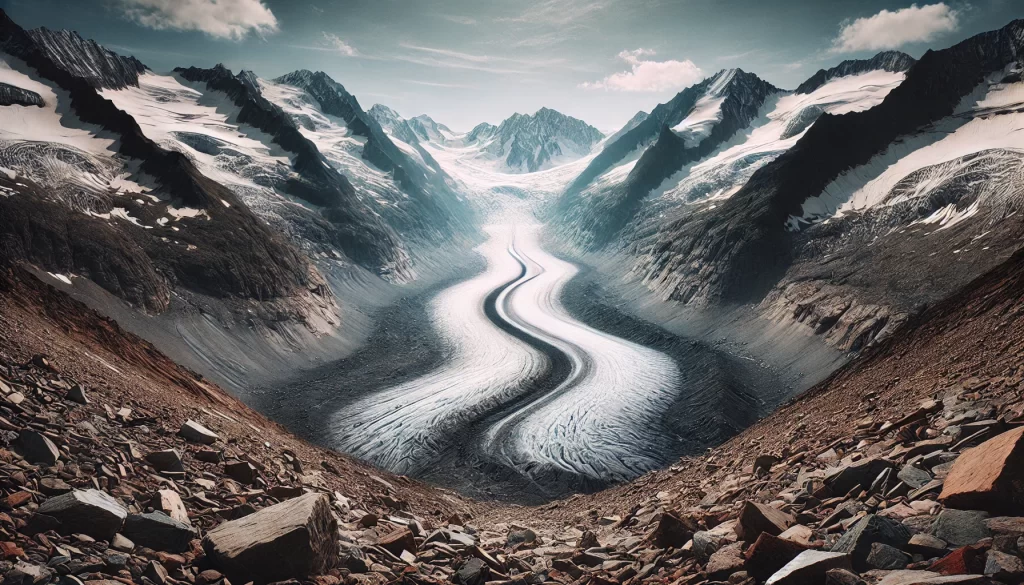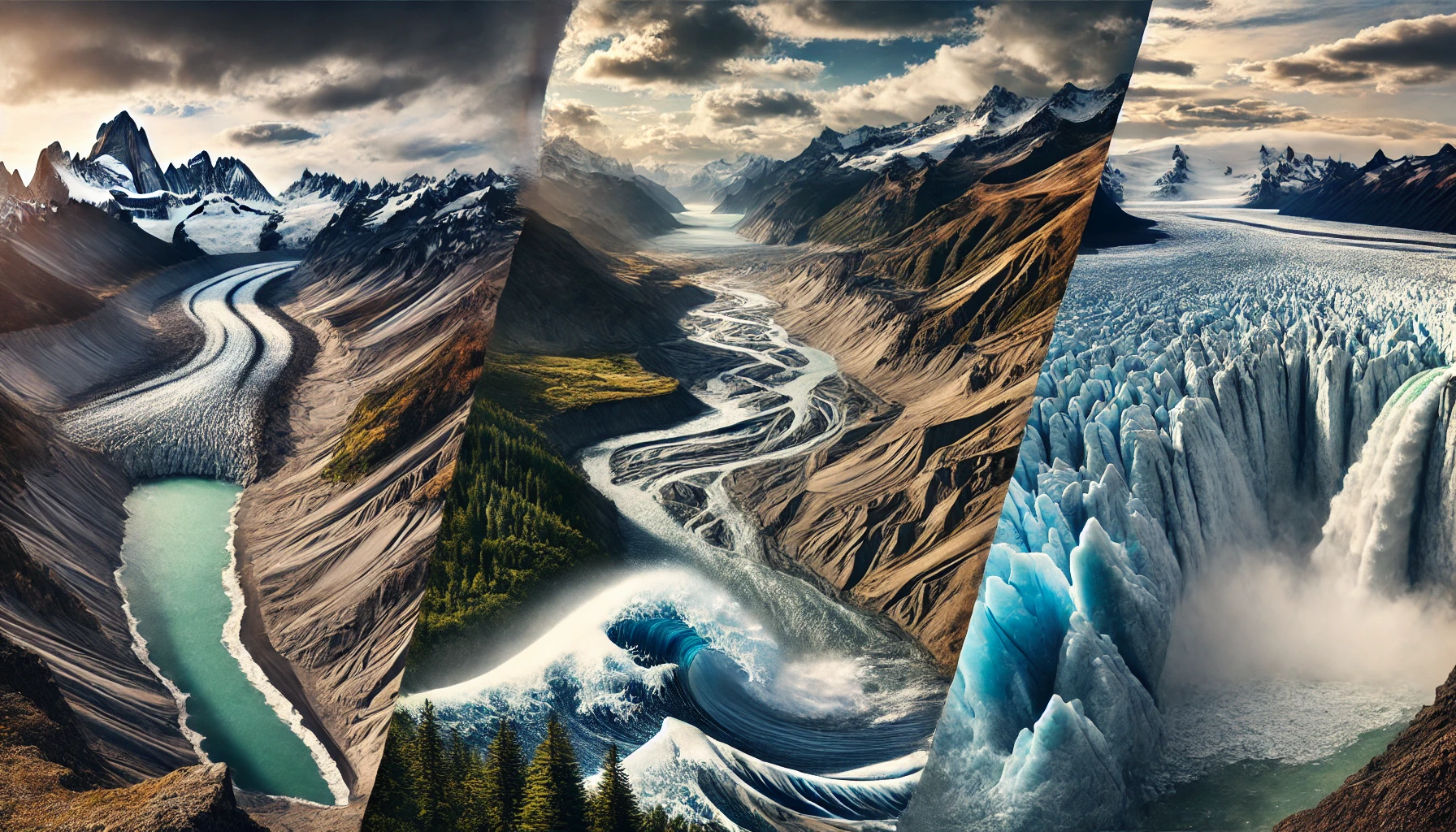Table of Contents
Water is a fundamental force that continuously reshapes our planet. How does water change the Earth’s surface? From forming massive valleys to creating fertile plains, water plays a vital role in shaping the land we live on. In this article, we will explore how water causes these transformations through processes like erosion, weathering, and deposition. Additionally, we’ll dive into how natural disasters involving water cause rapid and dramatic changes to landscapes.
How Does Water Change the Earth’s Surface?

One of the most significant ways water changes the Earth’s surface is through erosion. Erosion happens when water wears away rocks and soil, carrying sediment downstream or into oceans.
River Erosion: Shaping Valleys and Canyons
Flowing rivers are one of the most prominent examples of how does water change the Earth’s surface. Over time, rivers carve through land, creating deep valleys and gorges. For instance, the Grand Canyon was formed by the Colorado River over millions of years, illustrating the profound effects of water on the landscape.
Coastal Erosion: Water Sculpting the Shoreline
Another example of how does water change the Earth’s surface is coastal erosion. Waves constantly crash against shorelines, wearing away cliffs and beaches. This process not only reshapes coastlines but also creates formations like sea arches and sea stacks. Coastal erosion can significantly change the layout of the land, especially after storms or rising sea levels.
How Does Water Cause Weathering and Break Down Rocks?

Weathering is another crucial process in how does water change the Earth’s surface. Water helps to break down rocks into smaller particles through physical and chemical means.
Chemical Weathering: Water Dissolving Rocks
When it comes to how does water change the Earth’s surface, chemical weathering plays a big part. Rainwater, which contains carbon dioxide from the atmosphere, is slightly acidic. When this water seeps into cracks in rocks, it dissolves minerals, leading to rock breakdown. This is why we see the formation of limestone caves or karst landscapes.
Freeze-Thaw: Water Cracking Rocks Open
In colder climates, water enters cracks in rocks, freezes, and expands. This freeze-thaw cycle is a clear example of how water changes the Earth’s surface. Over time, the continuous freezing and thawing can break rocks apart, leading to further changes in the landscape.
How Water Deposition Builds New Landforms
While water is known for wearing downland, it also has the power to build it up. Deposition happens when water slows down and deposits the sediments it carries. This process is an essential part of how water changes the Earth’s surface by creating new landforms.
River Deltas: New Land at River Mouths
River deltas are an excellent example of how does water change the Earth’s surface through deposition. As rivers meet the ocean or a lake, they lose momentum and deposit sediment, creating fertile delta lands like the Nile Delta. These areas are crucial for agriculture and human settlement.
Floodplains: Fertile Soil Deposited by Floods
Floodplains provide another perspective on how water changes the Earth’s surface. When rivers flood, they deposit rich, nutrient-filled sediment on the land, making it fertile. This is why civilizations have flourished near riverbanks for thousands of years.
How Does Water Create Natural Disasters that Alter the Earth’s Surface?
Water’s ability to shape the Earth doesn’t stop with gradual processes. Sometimes, water can cause sudden, dramatic changes to the landscape through natural disasters. These disasters offer an extreme example of how water changes the Earth’s surface in a short amount of time.
Floods: Rapid Reshaping of the Land
Floods are one of the most destructive ways how water changes the Earth’s surface. During heavy rainfall or snowmelt, rivers can overflow, flooding nearby areas. As the water recedes, it can leave behind new layers of sediment, carve new channels, and completely alter the surrounding landscape.
Landslides: Water Moving Mountains
Landslides and mudslides provide a dramatic example of how water changes the Earth’s surface. When the ground becomes saturated with water from heavy rain or snowmelt, the weight of the water causes the soil and rocks to slide downhill, reshaping valleys and hillsides instantly.
How Glaciers and Ice Shape the Earth’s Surface
Though often overlooked, glaciers represent frozen water’s role in shaping the Earth. As massive ice sheets move, they scrape and carve the ground beneath them. Glacial activity demonstrates yet another aspect of how water changes the Earth’s surface.
Glacier Movement: Carving Out Valleys
Glaciers are slow-moving rivers of ice that carve deep valleys and sharp mountain peaks as they advance. The dramatic U-shaped valleys seen in many mountainous regions are perfect examples of how water changes the Earth’s surface through glacial erosion.
Also Read: How Often Does It Rain in Seattle? The Shocking Truth Revealed!
Melting Ice and Rising Seas: Changing Coastlines
The melting of glaciers and ice caps due to global warming is altering coastlines worldwide. This process showcases another form of how water changes the Earth’s surface, as rising sea levels cause increased coastal erosion, reshaping the edges of continents.
Water is one of the most powerful forces in nature, continuously working to reshape our planet. How does water change the Earth’s surface? Through erosion, weathering, and deposition, water has an astonishing ability to transform landscapes over time. Whether it’s a river carving a canyon, waves eroding a coastline, or glaciers sculpting mountains, water is constantly at work, altering the Earth in both subtle and dramatic ways. Understanding how water changes the Earth’s surface gives us a better appreciation for the power of nature and its influence on the world we live in.




